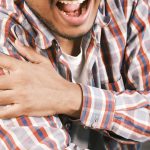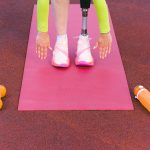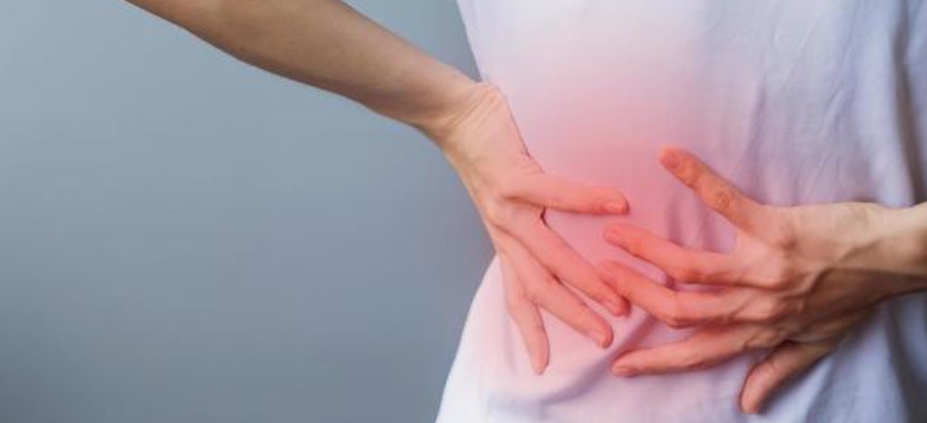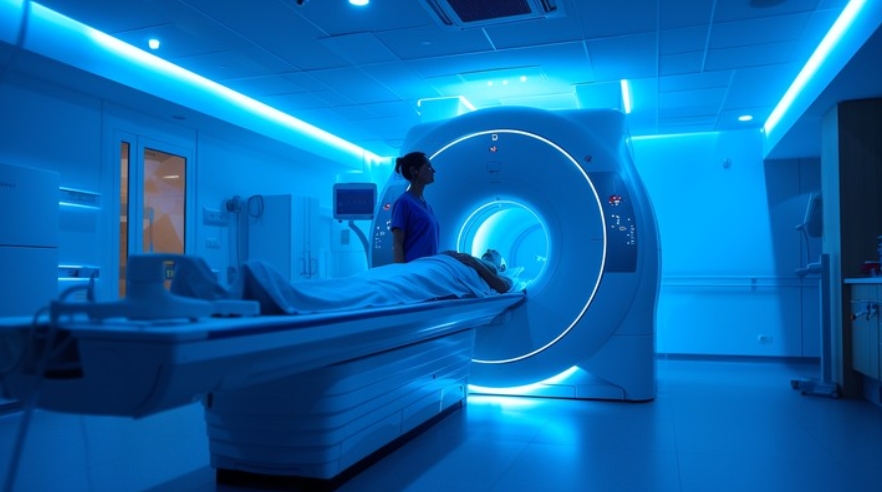Sciatic scoliotic list (SSL) [Matsui H, et al. 1998; Krishnan KM, and Newey ML. 2001], also referred to as sciatic scoliosis [Krishnan KM, Newey ML. 2001; Kim R, et al. 2015; Zhang Y, et al. 2019], trunk list [Gillan MG, et al. 1998], or trunk shift [Wu W, et al. 2019], is observed in 13.2-17.7% of adults with lumbar disc herniation (LDH) [Kim R, et al. 2015; Zhang Y, et al. 2019; Gillan MG, et al. 1998]. The lateral shift may be towards the dominant pain side (ipsilateral) or away from it (contralateral), with contralateral shifts being more common [McKenzie RA. 1972; Tenhula JA, et al. 1990; Matsui H, et al. 1998]. Occasionally, the shift alternates sides, termed alternating scoliosis [Capener N. 1933] or alternating lumbar lateral shift [Peterson S, and Laslett M. 2020]. The lateral shift can result from avoidance of spinal nerve compression or irritation, either reflexively through muscle spasm or actively [Weitz EM. 1976; Falconer MA, et al. 1948; Grieve GP. 1983; White, A. A., and Panjabi, M. M. 1990]. Finneson hypothesized that a lateral disc herniation causes a shift opposite to the side of sciatica, while a medial herniation results in a shift towards the side of sciatica [Akhaddar, A. 2023; Matsui H, et al. 1998]. Alternatively, the shift may be due to disk mechanics where a herniation pushes the trunk away from the painful mass [Porter RW, and Miller CG. 1986; McKenzie RA. 1972] or due to vertebral body collapse into an annular fissure causing an ipsilateral shift [McKenzie RA. 1972]. This condition is strongly associated with intervertebral disc pathology [Porter RW, and Miller CG. 1986; McKenzie RA. 1972; Matsui H, et al. 1998; Suk KS, et al. 2001].
The following management approaches and safety considerations aim to effectively treat patients with SSL associated with LDH, ensuring improved outcomes and patient safety.
Physical Therapy Role in SSL Management
Identifying the presence and direction of a lateral lumbar shift is essential in certain physical therapy management approaches [Tenhula JA, et al. 1990]. McKenzie RA. [1981] defined criteria for relevant lateral shift:
- The upper body is visibly and unmistakably shifted to one side.
- The shift onset occurred with back pain.
- The patient is unable to correct the shift voluntarily, or if able, cannot maintain correction. Pain or restricted side-bending movement confirms a lateral lumbar shift. The side-bending movement test helps determine the presence and direction of the shift [Tenhula JA, et al. 1990].
- Correction affects the intensity and/or site of symptoms.
Management Approaches
Four primary management approaches include:
- Autotraction System: Developed by Lind and Natchev [1984].
- Unilateral Lumbar Traction: Based on protective scoliosis, described by Saunders [Saunders HD. 1983; Jayson MIV, 1981].
- Harrison Mirror Image Method: Shown to improve trunk list in chronic back pain patients [Harrison DE, et al. 2005].
- McKenzie Techniques: For manual and self-correction of the lateral shift [McKenzie RA. 1981; Jayson MIV, 1981], focusing on:
- Full correction of the lateral shift.
- Restoration of lumbar lordosis.
- Self-correction and maintenance: Instructing the patient in self-correction and lumbar extension.
- Recovery of flexion: Gradual reintroduction of lumbar flexion.
- Recovery of strength and agility.
Applying extension in the presence of lateral deformity can worsen symptoms, so lateral principles are prioritized, avoiding repeated sagittal movements [McKenzie RA. 1981].
Safety Considerations
According to Laslett M. [2009], certain caveats ensure safety:
- Abandon the procedure if pain worsens or peripheralizes.
- Stop if signs of radiculopathy or cauda equina compression develop.
- Consider the condition temporarily irreversible if the trunk cannot be pushed across the midline after persistent therapy.
- Avoid restoring extension if the shift cannot be corrected.
- Use less vigorous methods if the patient feels nausea or faintness during correction attempts.
Conclusion
In managing sciatic scoliotic list (SSL) associated with lumbar disc herniation (LDH), physical therapy plays a critical role. Effective treatment involves identifying the presence and direction of lateral shifts and employing targeted techniques such as McKenzie’s methods, unilateral traction, and mirror image correction. Understanding the underlying mechanisms and maintaining safety are paramount to successful outcomes.
Learning Points
- Identification and Direction: Correct identification of the presence and direction of a lateral lumbar shift is essential for effective management.
- McKenzie’s Techniques: Manual and self-correction techniques by McKenzie focus on lateral shift correction and lumbar lordosis restoration.
- Alternative Methods: Autotraction systems and unilateral lumbar traction are viable treatments, with evidence supporting the Harrison mirror image method.
- Mechanisms of Shift: Shifts may result from disc mechanics or nerve root compression, necessitating tailored therapeutic approaches.
- Safety Considerations: Monitoring for worsening symptoms, radiculopathy, or cauda equina compression is crucial to ensure patient safety and adjust treatment accordingly.
References
- Akhaddar, A. (2023). Atlas of Sciatica: Etiologies, Diagnosis, and Management. Springer.
- Capener N. Alternating Sciatic Scoliosis. Proc R Soc Med. 1933 Feb;26(4):425-9. PMID: 19989147; PMCID: PMC2204550.
- Falconer MA, McGeorge M, Begg AC. Surgery of lumbar intervertebral disk protrusion; a study of principles and results based upon 100 consecutive cases submitted to operation. Br J Surg. 1948 Jan;35(139):225-49. doi: 10.1002/bjs.18003513902. PMID: 18900988.
- Gillan MG, Ross JC, McLean IP, Porter RW. The natural history of trunk list, its associated disability and the influence of McKenzie management. Eur Spine J. 1998;7(6):480-3. doi: 10.1007/s005860050111. PMID: 9883957; PMCID: PMC3611301.
- Grieve GP. Treating backache–a topical comment. Physiotherapy. 1983 Sep 10;69(9):316. PMID: 6227924.
- Harrison DE, Cailliet R, Betz JW, et al. A non-randomized clinical control trial of Harrison mirror image methods for correcting trunk list (lateral translations of the thoracic cage) in patients with chronic low back pain. Eur Spine J. 2005;14:155–162.
- Jayson MIV, ed. The Lumbar Spine and Back Pain. 2nd ed. London, England: Pitman Publishing Ltd; 1981.
- Kim R, Kim RH, Kim CH, Choi Y, Hong HS, Park SB, Yang SH, Kim SM, Chung CK. The Incidence and Risk Factors for Lumbar or Sciatic Scoliosis in Lumbar Disc Herniation and the Outcomes after Percutaneous Endoscopic Discectomy. Pain Physician. 2015 Nov;18(6):555-64. PMID: 26606007.
- Krishnan KM, Newey ML. Lumbar scoliosis associated with a disc herniation in an adult. Rheumatology (Oxford). 2001 Dec;40(12):1427-8. doi: 10.1093/rheumatology/40.12.1427. PMID: 11752526.
- Laslett M. Manual correction of an acute lumbar lateral shift: maintenance of correction and rehabilitation: a case report with video. J Man Manip Ther. 2009;17(2):78-85. doi: 10.1179/106698109790824749. PMID: 20046549; PMCID: PMC2700497.
- Matsui H, Ohmori K, Kanamori M, Ishihara H, Tsuji H. Significance of sciatic scoliotic list in operated patients with lumbar disc herniation. Spine (Phila Pa 1976). 1998 Feb 1;23(3):338-42. doi: 10.1097/00007632-199802010-00010. PMID: 9507622.
- McKenzie RA. Manual correction of sciatic scoliosis. N Z Med J. 1972 Sep;76(484):194-9. PMID: 4508746.
- McKenzie RA. The Lumbar Spine: Mechanical Diagnosis and Therapy. Waikanae, New Zealand: Spinal Publications; 1981.
- Natchev E. A Manual on Autotraction. Stockholm, Sweden: Folksam Scientific Council; 1984.
- Peterson S, Laslett M. Alternating lumbar lateral shift: a case report. J Man Manip Ther. 2021 Feb;29(1):59-66. doi: 10.1080/10669817.2020.1787747. Epub 2020 Jul 2. PMID: 32615882; PMCID: PMC7889245.
- Porter RW, Miller CG. Back pain and trunk list. Spine (Phila Pa 1976). 1986 Jul-Aug;11(6):596-600. doi: 10.1097/00007632-198607000-00011. PMID: 2947332.
- Saunders HD. Use of spinal traction in the treatment of neck and back conditions. Clin Orthop. 1983;179:31-38.
- Suk KS, Lee HM, Moon SH, Kim NH. Lumbosacral scoliotic list by lumbar disc herniation. Spine (Phila Pa 1976). 2001 Mar 15;26(6):667-71. doi: 10.1097/00007632-200103150-00023. PMID: 11246383.
- Tenhula JA, Rose SJ, Delitto A. Association between direction of lateral lumbar shift, movement tests, and side of symptoms in patients with low back pain syndrome. Phys Ther. 1990 Aug;70(8):480-6. doi: 10.1093/ptj/70.8.480. PMID: 2142784.
- Weitz EM. The lateral bending sign. Spine (Phila Pa 1976). 1981 Jul-Aug;6(4):388-97. doi: 10.1097/00007632-198107000-00010. PMID: 7280828.
- White, A. A., & Panjabi, M. M. (1990). Clinical Biomechanics of the Spine (2nd ed.). Lippincott.
- Wu W, Chen Y, Yu L, Li F, Guo W. Coronal and sagittal spinal alignment in lumbar disc herniation with scoliosis and trunk shift. J Orthop Surg Res. 2019 Aug 20;14(1):264. doi: 10.1186/s13018-019-1300-0. PMID: 31451116; PMCID: PMC6710870.
- Zhang Y, Li W, Xu L, Jiang E, Qiu Y, Zhu Z. Sciatic Scoliosis Evolution after Lumbar Discectomy: A Comparison Between Adolescents and Young Adults. Pain Physician. 2019 Sep;22(5):E457-E465. PMID: 31561658.




